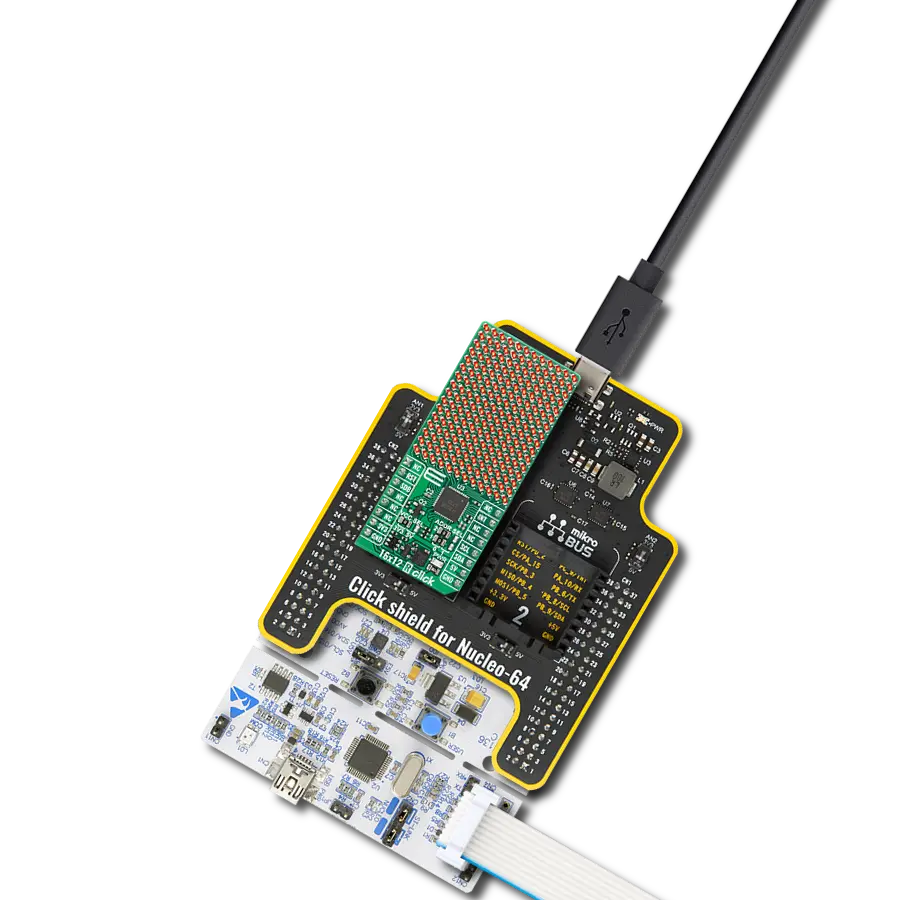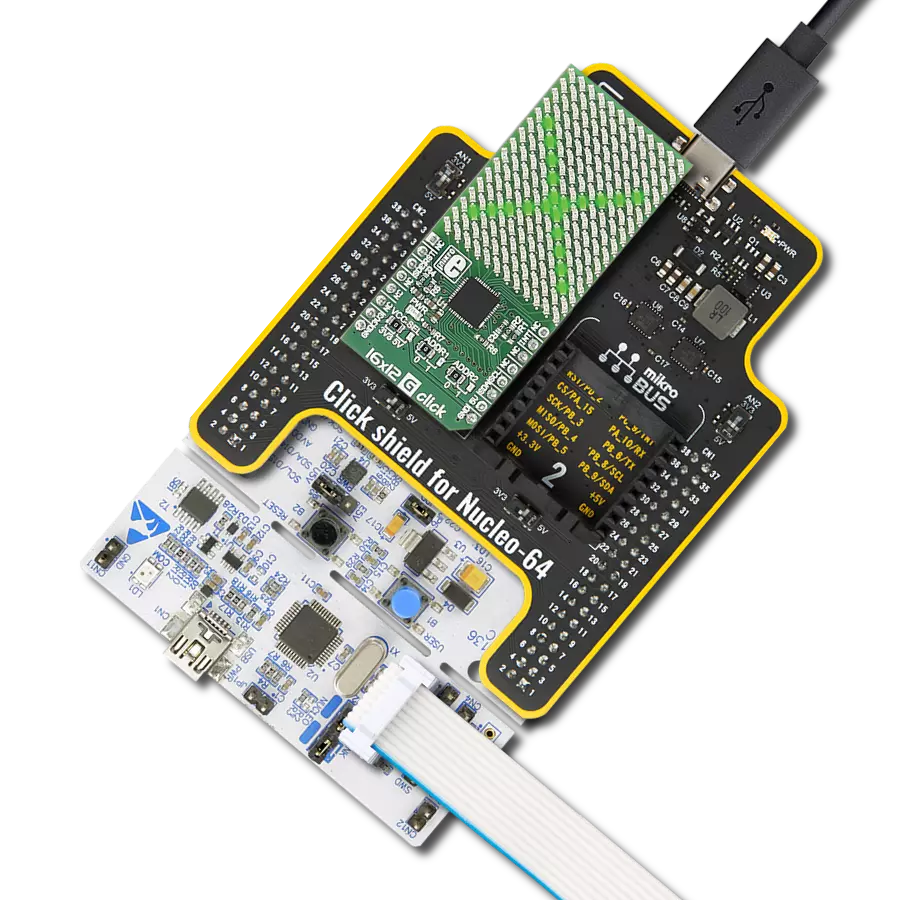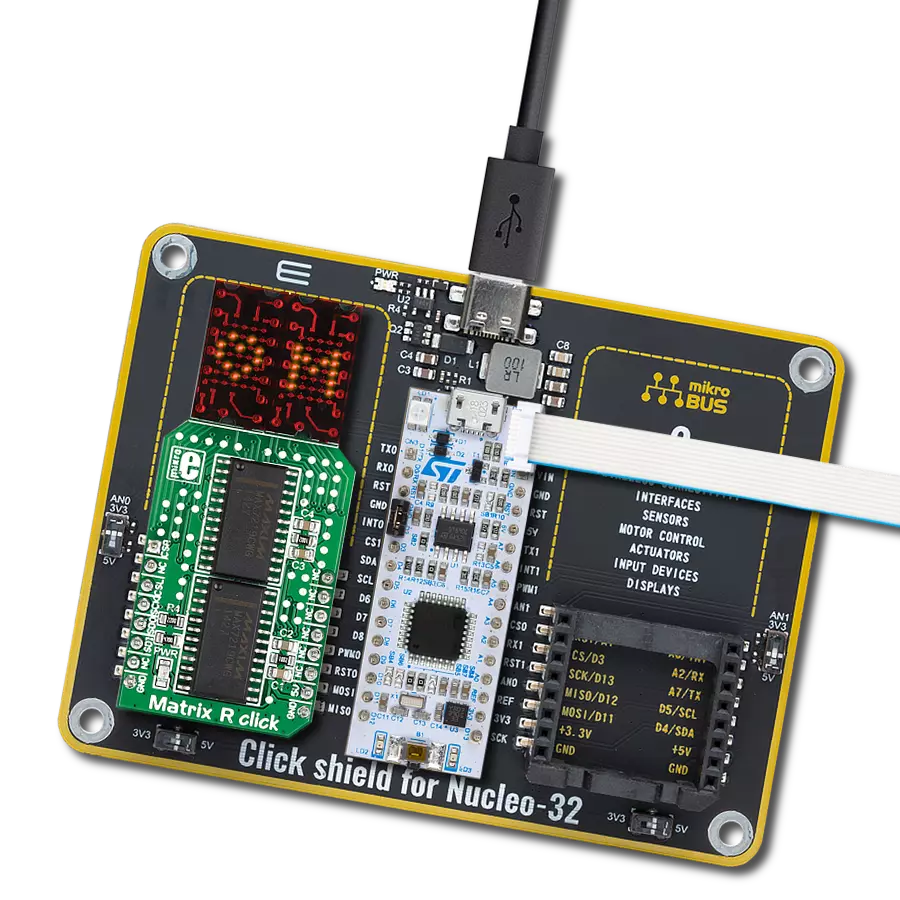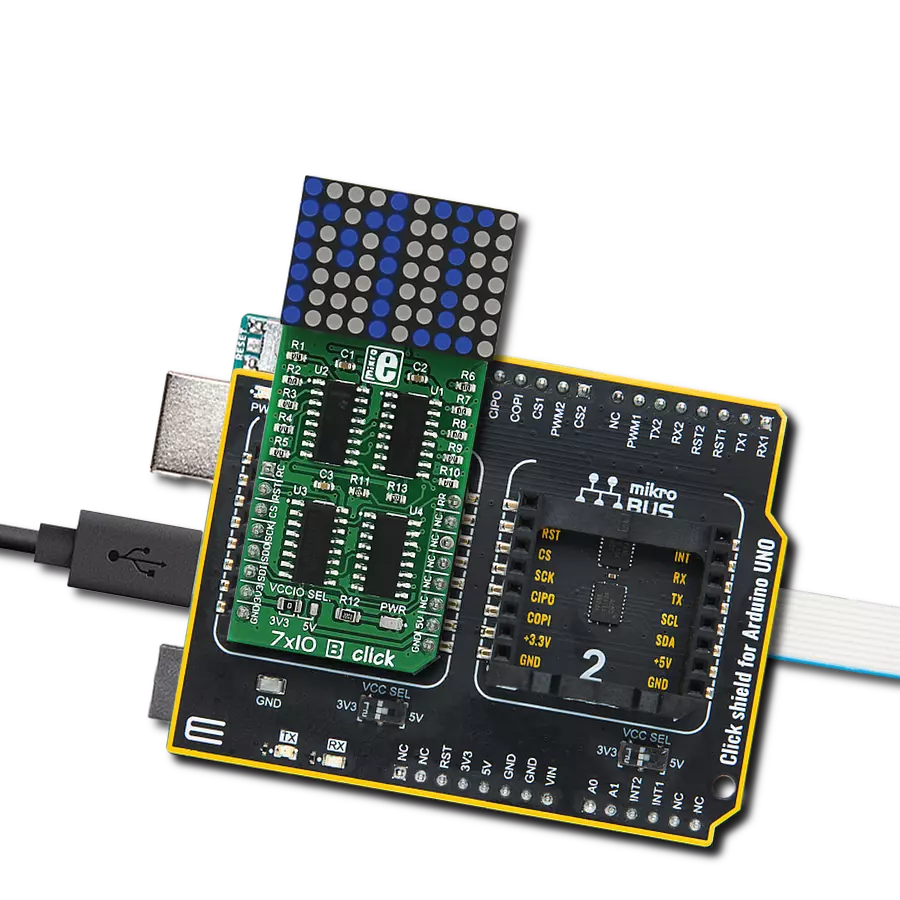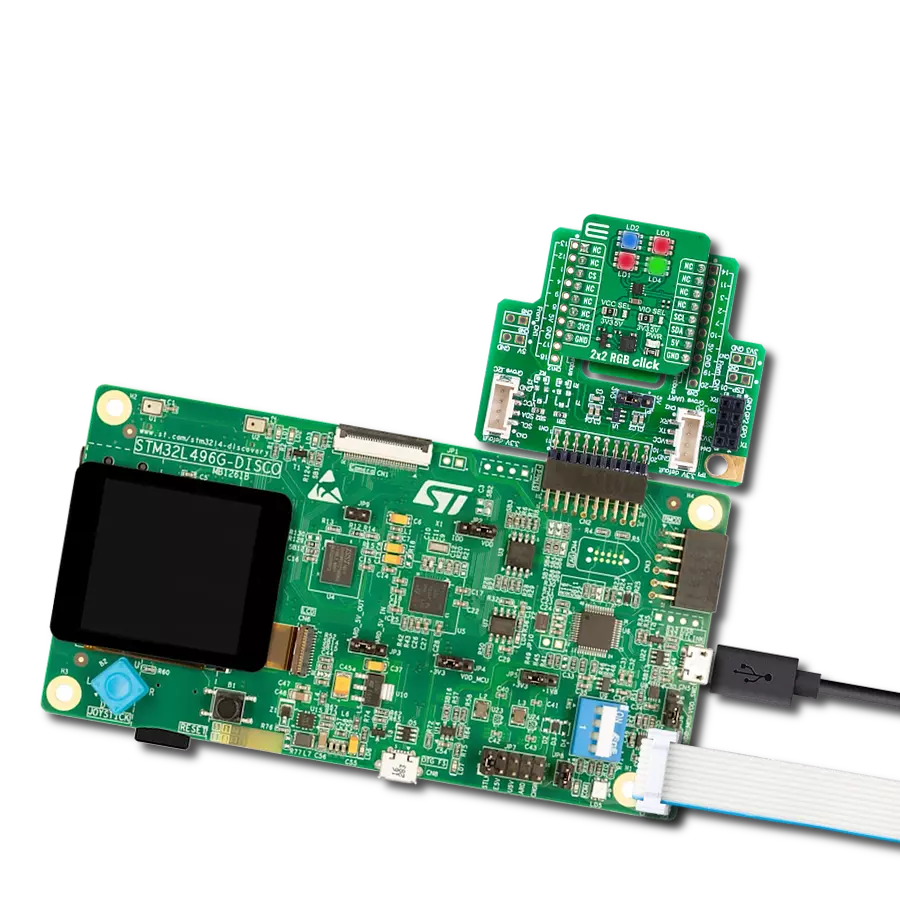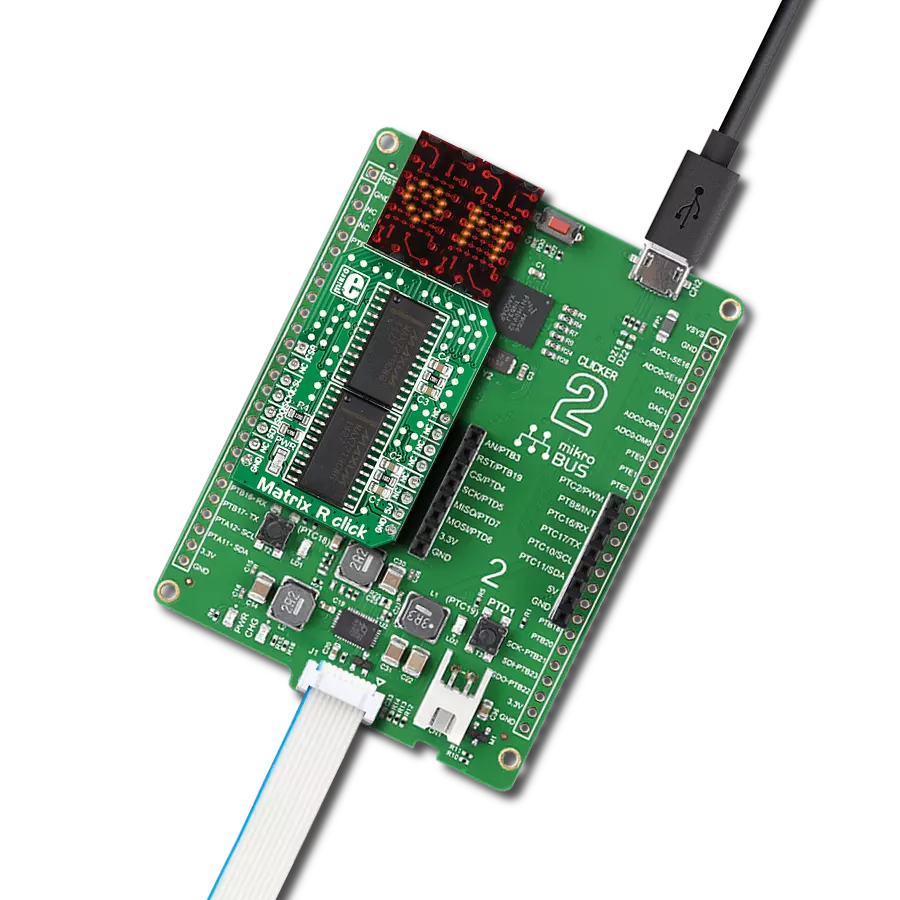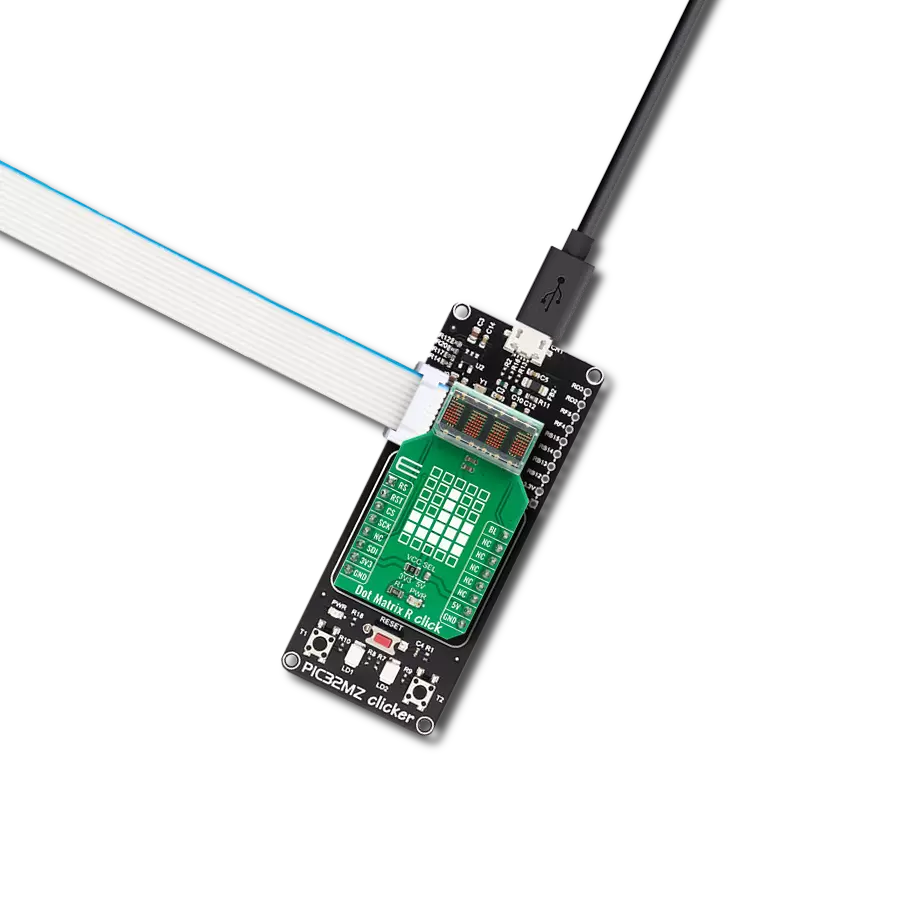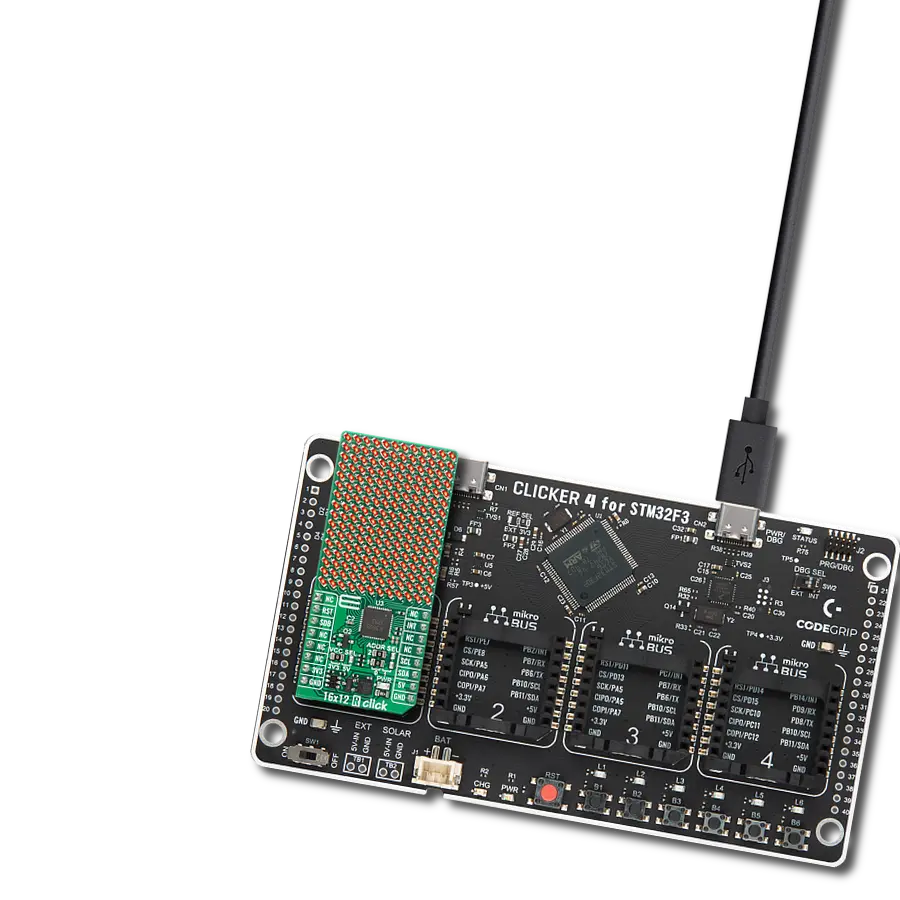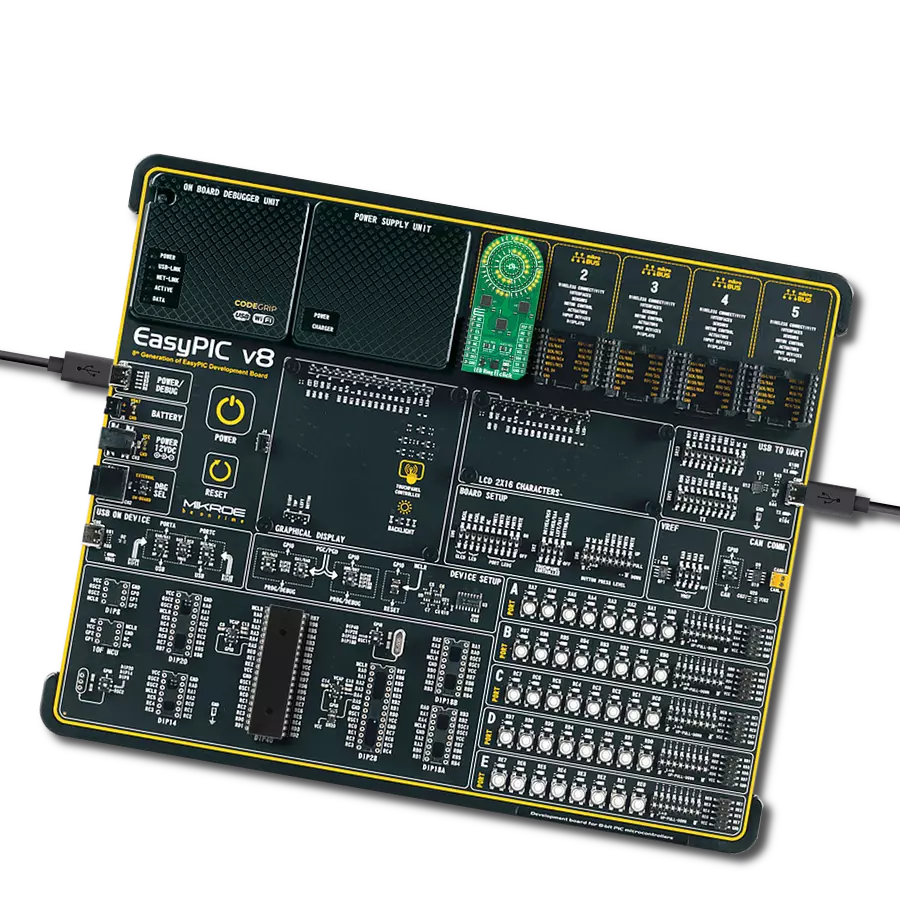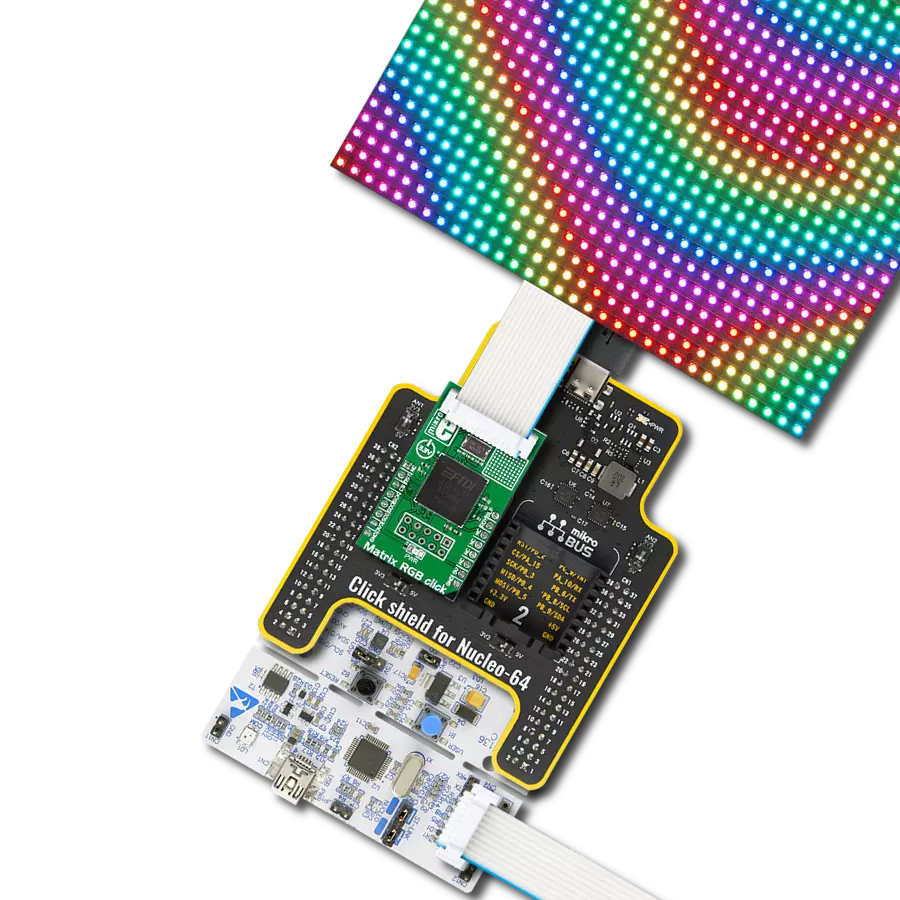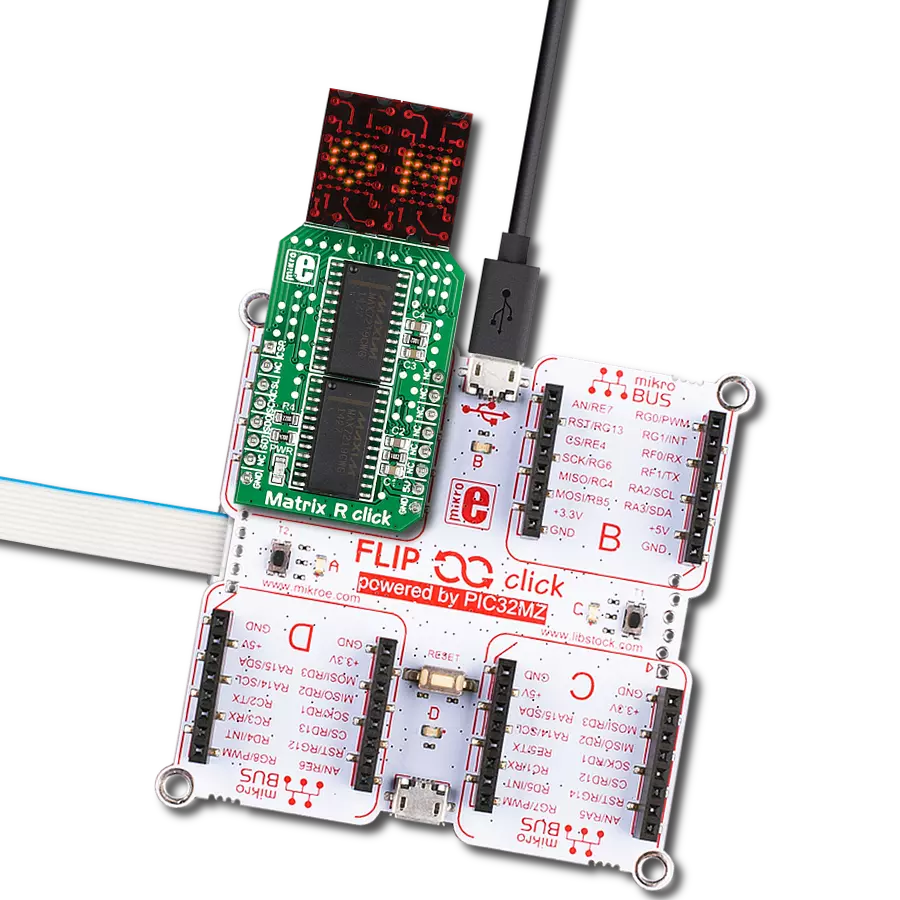Elevate your projects with the tranquil ambiance of our green LED dot matrix display, suited for creating visually pleasing displays, notifications, and graphics in various settings
A
A
Hardware Overview
How does it work?
7x10 G Click is based on two SZ410757Ns, green LED dot matrix modules from Wuxi Ark. A single LED matrix module is composed of 35 LED elements grouped in rows and columns. The LED elements in one row have their cathodes connected and routed to a single-row pin. The LED elements in one column have their anodes connected and routed to a single-column pin. Multiplexed like this, modules have a fairly low number of pins (12 per module), making them suitable to be driven by shift registers and a decade of counter ICs. The driver circuit consists of two 74HC595 - 8bit, serial input - parallel output shift registers, one CD4017 - a Jonson topology decade counter with ten outputs, and one ULN2003A - an IC with seven integrated
Darlington transistor pairs, all chips produced by Texas Instruments. The shift registers are used to polarize the anodes on the columns of the LED displays. To complete the LED's current path, their cathodes must be connected to the ground. This is where the CD4017 and ULN2003 ICs are used. The ULN2003 IC drives rows of the dot matrix displays by sinking the current on the active row. To activate one of the seven input channels of the ULN2003 IC, the CD4017 decade counter IC is used. The design of the decade counter allows only one row to be active at a time. So, to see the complete picture on an LED matrix, the row scanning has to be fast enough so that the effect called persistent vision takes place. It produces an illusion of a complete image, even if only one row
is seen at a time - because the human eye cannot detect very fast changes in light. 7x10 G Click uses a 4-wire SPI serial interface of the 74HC595 shift registers to communicate with the host MCU. The shift registers are chained together and can be reset over the RST pin. The clock and the reset inputs of the CD4017 are controlled by the RC and RR pins. This Click board™ can operate with either 3.3V or 5V logic voltage levels selected via the PWR SEL jumper. This way, both 3.3V and 5V capable MCUs can use the communication lines properly. Also, this Click board™ comes equipped with a library containing easy-to-use functions and an example code that can be used as a reference for further development.
Features overview
Development board
UNI Clicker is a compact development board designed as a complete solution that brings the flexibility of add-on Click boards™ to your favorite microcontroller, making it a perfect starter kit for implementing your ideas. It supports a wide range of microcontrollers, such as different ARM, PIC32, dsPIC, PIC, and AVR from various vendors like Microchip, ST, NXP, and TI (regardless of their number of pins), four mikroBUS™ sockets for Click board™ connectivity, a USB connector, LED indicators, buttons, a debugger/programmer connector, and two 26-pin headers for interfacing with external electronics. Thanks to innovative manufacturing technology, it allows you to build
gadgets with unique functionalities and features quickly. Each part of the UNI Clicker development kit contains the components necessary for the most efficient operation of the same board. In addition to the possibility of choosing the UNI Clicker programming method, using a third-party programmer or CODEGRIP/mikroProg connected to onboard JTAG/SWD header, the UNI Clicker board also includes a clean and regulated power supply module for the development kit. It provides two ways of board-powering; through the USB Type-C (USB-C) connector, where onboard voltage regulators provide the appropriate voltage levels to each component on the board, or using a Li-Po/Li
Ion battery via an onboard battery connector. All communication methods that mikroBUS™ itself supports are on this board (plus USB HOST/DEVICE), including the well-established mikroBUS™ socket, a standardized socket for the MCU card (SiBRAIN standard), and several user-configurable buttons and LED indicators. UNI Clicker is an integral part of the Mikroe ecosystem, allowing you to create a new application in minutes. Natively supported by Mikroe software tools, it covers many aspects of prototyping thanks to a considerable number of different Click boards™ (over a thousand boards), the number of which is growing every day.
Microcontroller Overview
MCU Card / MCU
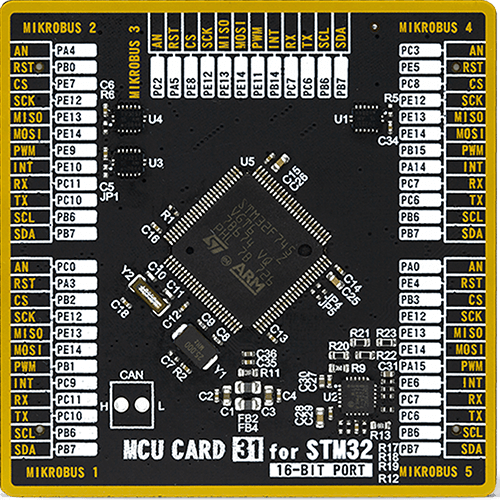
Type
8th Generation
Architecture
ARM Cortex-M7
MCU Memory (KB)
1024
Silicon Vendor
STMicroelectronics
Pin count
100
RAM (Bytes)
327680
Used MCU Pins
mikroBUS™ mapper
Take a closer look
Click board™ Schematic

Step by step
Project assembly
Software Support
Library Description
This library contains API for 7x10 G Click driver.
Key functions:
c7x10g_draw_pixel- Drawing the pixel on the displayc7x10g_draw_char- Drawing the character on the displayc7x10g_draw_number- Drawing the number on the display
Open Source
Code example
The complete application code and a ready-to-use project are available through the NECTO Studio Package Manager for direct installation in the NECTO Studio. The application code can also be found on the MIKROE GitHub account.
/*!
* @file main.c
* @brief c7x10G Click example
*
* # Description
* This demo example shows a drawing of pixels, characters and a number on the screen.
*
* The demo application is composed of two sections :
*
* ## Application Init
* Configuring the Click board.
*
* ## Application Task
* Draws characters, numbers, and pixels to the display.
*
* @author Jelena Milosavljevic
*
*/
#include "board.h"
#include "c7x10g.h"
// ------------------------------------------------------------------ VARIABLES
static c7x10g_t c7x10g;
// ------------------------------------------------------ APPLICATION FUNCTIONS
void application_init ( void ) {
c7x10g_cfg_t c7x10g_cfg; /**< Click config object. */
// Click initialization.
c7x10g_cfg_setup( &c7x10g_cfg );
C7X10G_MAP_MIKROBUS( c7x10g_cfg, MIKROBUS_1 );
c7x10g_init( &c7x10g, &c7x10g_cfg );
}
void application_task ( void ) {
c7x10g_pixel_t pixel;
uint8_t cnt;
uint8_t cnt_x;
uint8_t cnt_y;
// CHAR PROCEDURE
for ( cnt = 'A'; cnt < 'Z'; cnt+=2 ) {
c7x10g_draw_char( &c7x10g, cnt, C7X10G_DISPLAY_LEFT, C7X10G_DISPLAY_DELAY_50MS );
c7x10g_draw_char( &c7x10g, cnt + 1, C7X10G_DISPLAY_RIGHT | C7X10G_DISPLAY_REFRESH, C7X10G_DISPLAY_DELAY_50MS );
Delay_ms ( 1000 );
}
// COUNTER PROCEDURE
for ( cnt = 0; cnt < 15; cnt++ ) {
c7x10g_draw_number( &c7x10g, cnt, C7X10G_DISPLAY_DELAY_50MS );
Delay_ms ( 500 );
}
// PIXELS PROCEDURE
for ( cnt_x = 0; cnt_x <= 7; cnt_x++ ) {
for ( cnt_y = 0; cnt_y <= 10; cnt_y++ ) {
pixel.cord_x = cnt_x;
pixel.cord_y = cnt_y;
c7x10g_draw_pixel( &c7x10g, &pixel, C7X10G_DISPLAY_PIXEL_STORAGE, C7X10G_DISPLAY_DELAY_20MS );
pixel.cord_x = cnt_x;
pixel.cord_y = cnt_y + 1;
c7x10g_draw_pixel( &c7x10g, &pixel, C7X10G_DISPLAY_PIXEL_REFRESH, C7X10G_DISPLAY_DELAY_20MS );
}
}
}
int main ( void )
{
/* Do not remove this line or clock might not be set correctly. */
#ifdef PREINIT_SUPPORTED
preinit();
#endif
application_init( );
for ( ; ; )
{
application_task( );
}
return 0;
}
// ------------------------------------------------------------------------ END
Additional Support
Resources
Category:LED Matrix



















